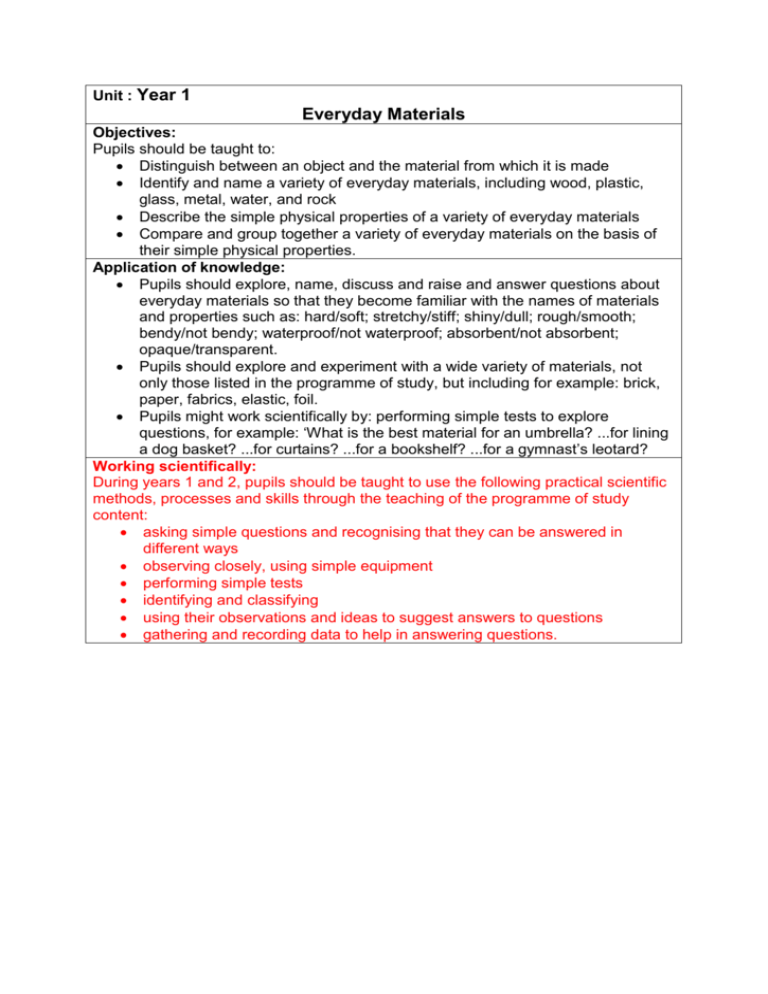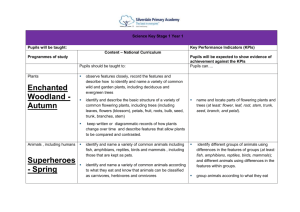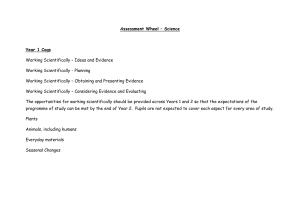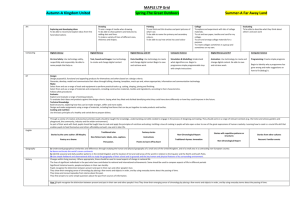Unit- Yr1 Everday materials
advertisement

Unit : Year 1 Everyday Materials Objectives: Pupils should be taught to: Distinguish between an object and the material from which it is made Identify and name a variety of everyday materials, including wood, plastic, glass, metal, water, and rock Describe the simple physical properties of a variety of everyday materials Compare and group together a variety of everyday materials on the basis of their simple physical properties. Application of knowledge: Pupils should explore, name, discuss and raise and answer questions about everyday materials so that they become familiar with the names of materials and properties such as: hard/soft; stretchy/stiff; shiny/dull; rough/smooth; bendy/not bendy; waterproof/not waterproof; absorbent/not absorbent; opaque/transparent. Pupils should explore and experiment with a wide variety of materials, not only those listed in the programme of study, but including for example: brick, paper, fabrics, elastic, foil. Pupils might work scientifically by: performing simple tests to explore questions, for example: ‘What is the best material for an umbrella? ...for lining a dog basket? ...for curtains? ...for a bookshelf? ...for a gymnast’s leotard? Working scientifically: During years 1 and 2, pupils should be taught to use the following practical scientific methods, processes and skills through the teaching of the programme of study content: asking simple questions and recognising that they can be answered in different ways observing closely, using simple equipment performing simple tests identifying and classifying using their observations and ideas to suggest answers to questions gathering and recording data to help in answering questions.





![afl_mat[1]](http://s2.studylib.net/store/data/005387843_1-8371eaaba182de7da429cb4369cd28fc-300x300.png)





